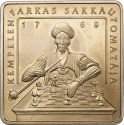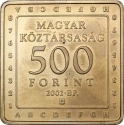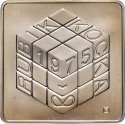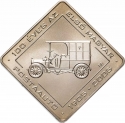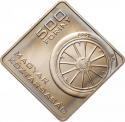You are about to finish your registration. Please check your mailbox (including spam folder). There should be a letter with a confirmation link. Check setting to make sure that your e-mail address is correct.
Send letter againDescription
Ányos Jedlik (1800-1895) was a Hungarian Benedictine priest, physicist, engineer, and inventor renowned for his groundbreaking contributions to electrical engineering and electromagnetism in the 19th century.
Among his notable achievements was the development of the principle of self-excitation, exemplified in the creation of the first commutated rotating coil electromechanical apparatus—a precursor to the modern electric motor. Jedlik also explored electromagnetic rotating mechanisms, introducing the concept of the rotary transformer and advancing dynamo technology.
Beyond his electromagnetic innovations, Jedlik designed and fabricated various early electric motors and generators, alongside inventive devices like Jedlik's bell, an early iteration of the electric bell.
Ányos Jedlik's pioneering work established the groundwork for further progress in electrical engineering, significantly shaping the trajectory of electrical technology in the 19th century. He stands as a revered figure in the history of electrical engineering and electromagnetism.
Engraver: Balázs Bitó
Obverse

|
Depicts the portrait of Ányos Jedlik. To the right of the portrait, a simplified version of the cross of Saint Benedict is visible, with the initials "Crux Sancti Patris Benedicti" ("Cross of Holy Father Benedict"). Encircling the sides along the edge, the inscription "THE DESCRIPTOR OF THE DYNAMO PRINCIPLE" is present. Above the portrait, "ÁNYOS JEDLIK" is displayed, parallel to the right edge of the coin, "1861" is positioned, and below the portrait, the inscription "1800-1895" can be read. In the bottom right corner, the engraver's privy mark is placed. JEDLIK ÁNYOS |
|---|---|
Reverse

|
Depicts the Jedlik dynamo. Beneath the depiction, enclosed within a border, the phrase "THE UNIPOLAR SELF-STARTING MACHINE" is presented. Underneath the border, the words "HUNGARIAN" and "REPUBLIC" are arranged in two horizontal lines. Positioned above the dynamo illustration, in a single line, the currency denomination and the text "FORINT" are prominently featured. To the left of the denomination, beneath it, the mint mark "BP." is depicted, while on the right side, below the "FORINT" inscription, the year of release "2011" is clearly visible. 1000 FORINT |
| Edge |
1000 Forint
Third Republic
Hungarian Explorers and Their Inventions
Dynamo by Ányos Jedlik
Subscribe series
KM# 829 Adamo# EM236
Hungarian Explorers and Their Inventions
Dynamo by Ányos Jedlik
Characteristics
| Type | Commemorative Issue (Non-circulating) |
| Material | Copper Nickel |
| Weight | 14 g |
| Diameter | - |
| Width | 28.4 mm |
| Height | 28.4 mm |
| Thickness | 2.2 mm |
| Shape |
|
| Alignment | Medal |
| Mint |
Budapest Mint (BP)
|
Related coins
Hungarian Explorers and Their Inventions
Hungarian Explorers and Their Inventions
Hungarian Explorers and Their Inventions


